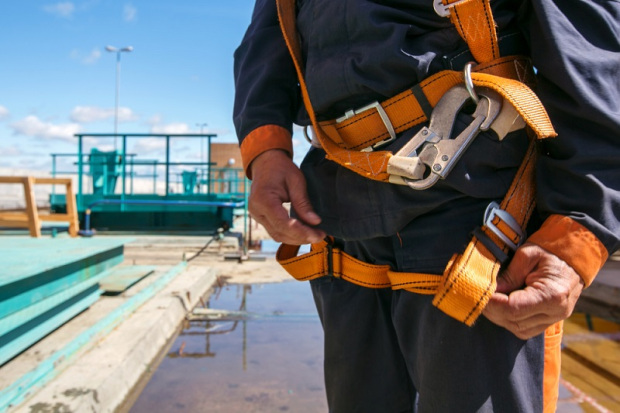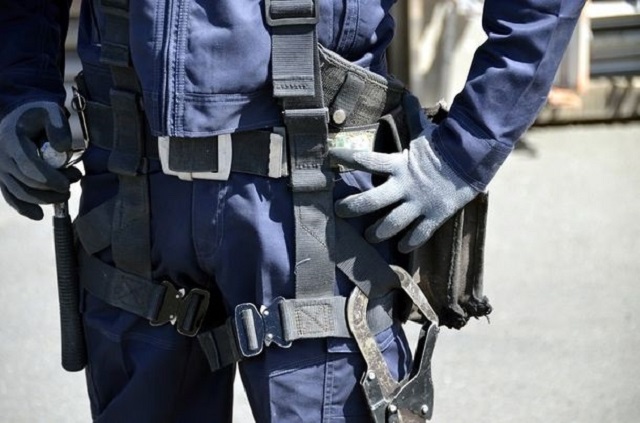Inside this construction sector, stories of workers who suffered severe injuries after falling from an elevation are not unusual. In many more tragic instances, employees have perished since their jobs required them to work at altitudes.
The OSHA, i.e., Occupational Safety and Health Administration, has prioritized the development of high-calibre fall protection systems because of this. This entails setting up tools to shield the worker from every potential fall-related tragedy. Read on to know more about how these highly-functional protection systems can benefit you.

Types Of Fall Protection Systems – Which One Is Right For You?
In this section of the article, you will get to know about the types of fall protection systems which are highlighted below-
- Suspension Belts: Employees who need to modify their stance vertically or conduct various tasks while dangling may utilize suspension belts to sustain them.
- Chest Harnesses: Chest harnesses can be used to retrieve people from tanks, bins, or confined areas, as well as in locations with minimal fall hazards that don’t involve rapid vertical descent.
- Body Belts: Individuals working in risky locations are restrained by body belts to help lower the danger of falls. They cannot substitute in place of fall arrest devices because they are simply for placement.
- Body Harness: The most hazardous falls can be stopped with complete body harnesses, ideal fall protection systems.
- Web Lanyards: For workplaces with fall dangers under two feet, web lanyards seem to be best.
- Rope Lanyards: Because of their elastic characteristics, rope lanyards are utilized as restraining devices.
- Cable Lanyards: In corrosive or hot conditions, cable lanyards perform well, although shock absorption devices should support them. You can implement Rails on curved surfaces and fixed ladders to minimize falls.
- Safety Nets: When no ladders or artificial floors are present, and the fall height is over 25 feet, safety nets can be pretty effective.
- Retractable Lifelines: In regions with a high fall risk, retractable lifelines guarantee mobility and fall protection.
- Rope Grabs: These braking mechanisms run on life rafts and enable safe workers to descend and ascend or clamp a lifeline in the event of a collapse.
- Shock Absorbers: This tool lessens the danger of fall injuries and fall-stopping forces, making it one of the fantastic fall protection systems.
Why Fall Protection Systems Are A Necessity- Benefits Explained
- Workers Receive More Training: Workers who use fall protection systems must now be outfitted with the equipment and supplies needed to maintain them secure. Workers will become more proficient due to their instruction in maintaining their safety and performing their tasks.
- Work Is Completed Quicker: Accidents might result in severe obligations for the business and a few days or perhaps even months’ worth of work delays. With fall protection systems, employees are less likely to stay at their jobs because of anxiety or despair. Productivity diminishes when workers are demotivated.
- A Professional Attitude Develops: With more skilled employees, professionalism is exercised and cultivated at every job site. The fall preventative measures established by OSHA are regulated, and following them will turn you or your staff into a well-oiled machine.
- Makes Employers More Reputable: Clients will be amazed and eager to hire you as soon as they learn of the zero fatality record, provided that the project meets their building standards. Fall protection systems inside the construction industry can help companies in the long term by establishing a reputation for professionalism and safety and protecting workers.
- Stop Fatalities: The workers’ protection is, undoubtedly, the most apparent but frequently disregarded factor. The primary cause of hospital admissions, accidents, fatality, and trauma among numerous industry employees has been identified as falls. The freedom and life of persons who experience it can struggle greatly. Therefore, stopping this is only reasonable.

Conclusion
At the end of the day, fall protection systems are crucial for the welfare and protection of employees in many industries, even though you think you will not need them. You may build a group that recognizes the risks of the task and the necessity for appropriate equipment utilization with the aid of preparation, education, and training. You may devote your attention to your job with trust in your processes as you create a fall security program that puts safety first.

